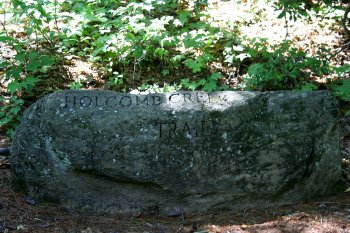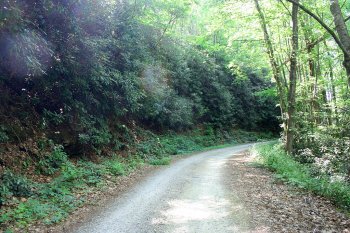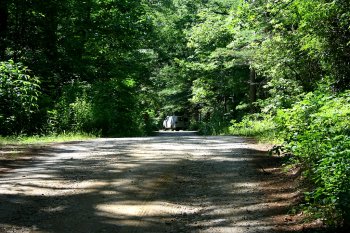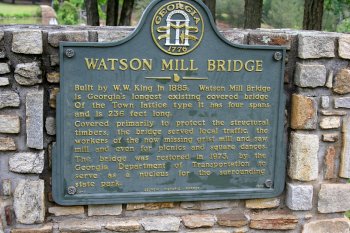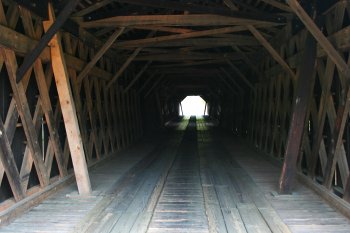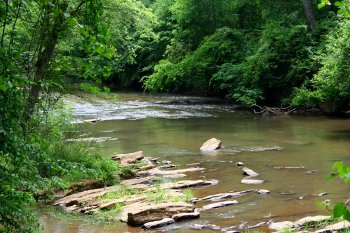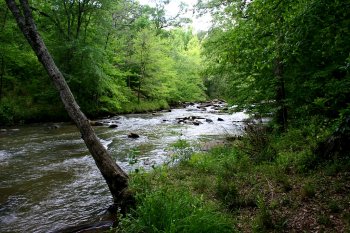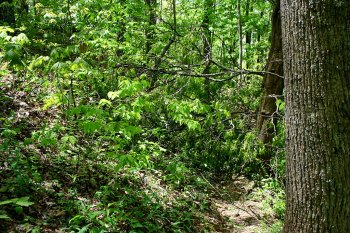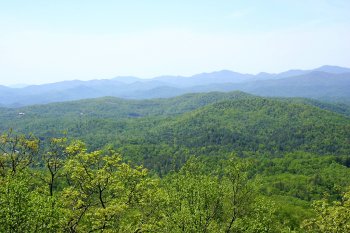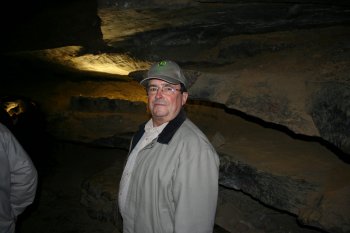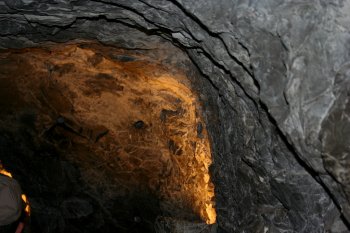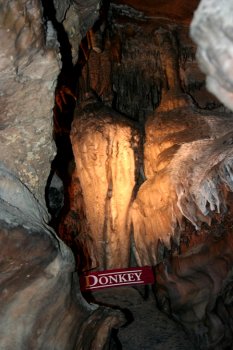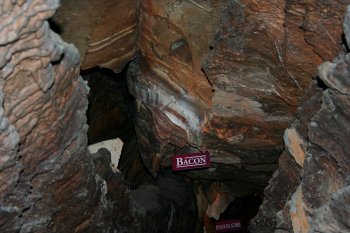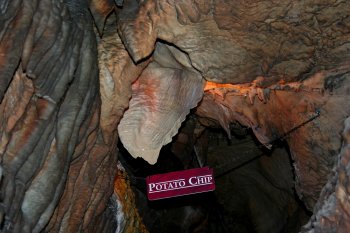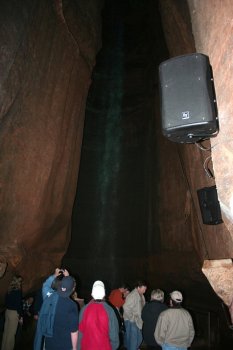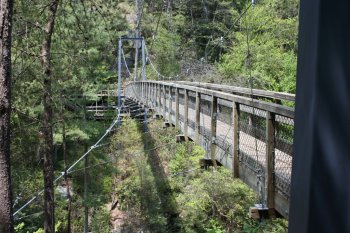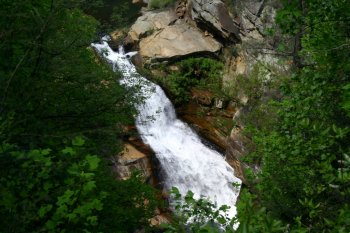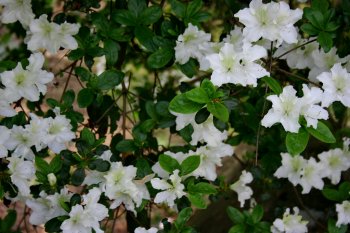Holcomb Creek Trail
by rmajorThe Holcomb Creek Trail is in a remote area a few miles east of Clayton, Ga. Getting there involved driving 10 miles from Clayton on a winding, twisting backroad. Then I turned left onto Forest Service Road 7, also known as Hale Ridge Road. FS7 is a gravel road, narrow in many places, with a lot of twists, turns, and rough spots. It took over half an hour to drive the 7 miles to the trailhead. The information I had said the trail descended pretty steeply for .3 mile to a footbridge at Holcomb Creek Falls, and proceeded from there another .25 mile to Ammons Creek Falls. An alternate trail from that point would follow Holcomb Creek for .6 mile back to FS7. This was said to be an easier approach, with more room for parking, so I chose to start from there. As I drove the .5 mile to the alternate trailhead, I was a bit concerned that I was driving uphill, and that was altitude I would have to lose and regain on foot.
The rock pictured above marks the entrance to the main trail.
As I followed the trail alongside Holcomb Creek, I came upon this small cascade and pool.
A closer view of the cascade.
Leaving the cascade, I headed on downhill. The section of the trail shown here was tame and easily traveled. Unfortunately, it didn’t stay that way. As I went farther downhill, the trail got steeper and narrower, with a lot of exposed roots and stuff to trip over. The dropoffs beside the trail kept getting deeper and steeper. With my fear of heights, it was really rattling my nerves. I began to wonder if it was really a good idea for me to be hiking such a narrow trail by myself in a very remote area.
At the bottom of the trail was the overlook for Ammons Creek Falls, a 40 foot cascade. I met another group of hikers who had come in the other way. They assured me that way wasn’t bad.
As I headed down the main trail toward Holcomb Creek Falls, I was stopped dead in my tracks by a brilliant splotch of color. I’ve seen a lot of fungi in my time, but I don’t think I’ve ever seen any this colorful.
This is the 120 foot cascade known as Holcomb Creek Falls. It was a beautiful sight to behold, even though much of the lower portion was obscured by trees.
Since I was pretty sure I didn’t want to go out the way I came in, I began the climb to the main trailhead. The trail was a bit narrow and dangerous in some places, but mostly wasn’t too bad.
After having to so carefully watch my step on the trail, it was a relief to get back to the road. Even though I still faced a .5 mile uphill climb, I knew if I tripped and fell I wouldn’t fall very far.
It’s always a relief to get back to my vehicle after a long walk.
My first thoughts after completing this hike were that I was glad I had done it, but I didn’t want to do it again. After getting back home and going through my photos, I realized I might decide to do this one again someday. If I do, I’ll probably stick to the main trail and upper section of the alternate trail (where the small cascade is) and leave the lower section of the alternate trail to more sure-footed individuals.
